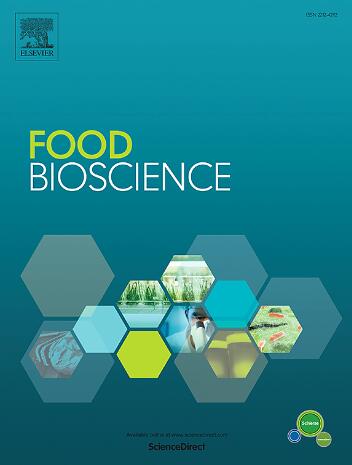Natural products from camels; glycoproteins, enzymes, and immunoglobulins with potential as nano biomolecules for anti-oxidant, anti-cancer, and anti-bacterial activities
IF 4.8
1区 农林科学
Q1 FOOD SCIENCE & TECHNOLOGY
引用次数: 0
Abstract
Natural products such as camel milk, a nutritional powerhouse with a high content of proteins, vitamins, lipids, amino acids, oligosaccharides, nucleotides and minerals, offer numerous health benefits. Both camel milk and urine are known for their remarkable properties, including antiviral, anticancer, hypoglycemic, antioxidant, antifungal and antibacterial effects. In particular, lactoferrin, a globular glycoprotein found in camel's milk, has strong antioxidant, antimicrobial and anti-inflammatory properties. Camel milk also contains immunoglobulins and lysozyme, which contribute to its antibacterial and anti-inflammatory properties. These camel secretions have shown promising potential in cancer therapy, with applications in the treatment of breast, hepatocellular and lung cancer. Particularly intriguing is the fact that camel urine has quickly taken center stage in the development of new drugs for various diseases. This review comprehensively examines the antioxidant and antimicrobial properties of camel milk and urine. It also delves into the fascinating world of nano biomolecules in the physiological fluids of camels, demonstrating their ability to penetrate tissue and exhibit exceptional stability under extreme conditions. The fusion of nano technology and compositional characteristics of camel milk and urine holds great promise for the development of novel medical substances specifically tailored for cancer treatment.
来自骆驼的天然产品;具有抗氧化、抗癌和抗菌活性的纳米生物大分子潜力的糖蛋白、酶和免疫球蛋白
骆驼奶等天然产品营养丰富,含有大量蛋白质、维生素、脂类、氨基酸、低聚糖、核苷酸和矿物质,对健康益处多多。驼奶和尿液都以其显著的特性而闻名,包括抗病毒、抗癌、降血糖、抗氧化、抗真菌和抗菌作用。尤其是骆驼奶中的一种球状糖蛋白--乳铁蛋白,具有很强的抗氧化、抗菌和消炎作用。骆驼奶中还含有免疫球蛋白和溶菌酶,这些物质也具有抗菌消炎的作用。这些骆驼分泌物在癌症治疗方面显示出巨大的潜力,可用于治疗乳腺癌、肝癌和肺癌。尤其引人关注的是,骆驼尿已迅速成为开发治疗各种疾病的新药的中心。这篇综述全面探讨了骆驼奶和骆驼尿的抗氧化和抗菌特性。它还深入探讨了骆驼生理液体中纳米生物分子的迷人世界,展示了它们穿透组织的能力以及在极端条件下表现出的超强稳定性。纳米技术与骆驼奶和尿的成分特性的融合,为开发专门用于治疗癌症的新型医疗物质带来了巨大希望。
本文章由计算机程序翻译,如有差异,请以英文原文为准。
求助全文
约1分钟内获得全文
求助全文
来源期刊

Food Bioscience
Biochemistry, Genetics and Molecular Biology-Biochemistry
CiteScore
6.40
自引率
5.80%
发文量
671
审稿时长
27 days
期刊介绍:
Food Bioscience is a peer-reviewed journal that aims to provide a forum for recent developments in the field of bio-related food research. The journal focuses on both fundamental and applied research worldwide, with special attention to ethnic and cultural aspects of food bioresearch.
 求助内容:
求助内容: 应助结果提醒方式:
应助结果提醒方式:


